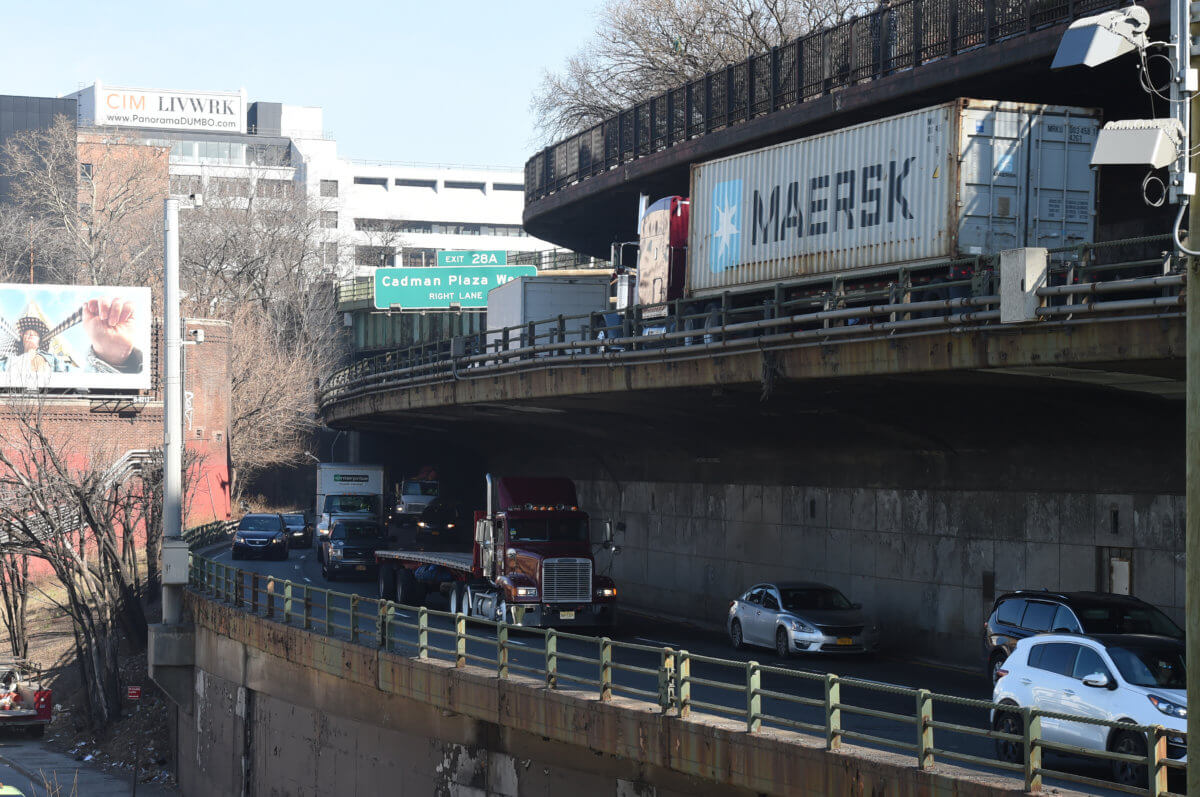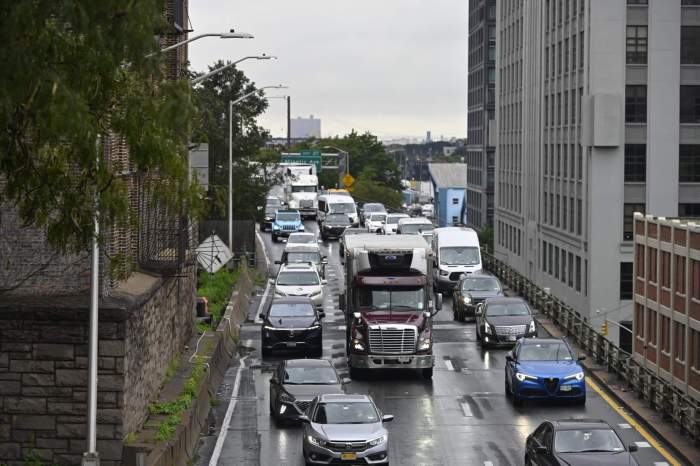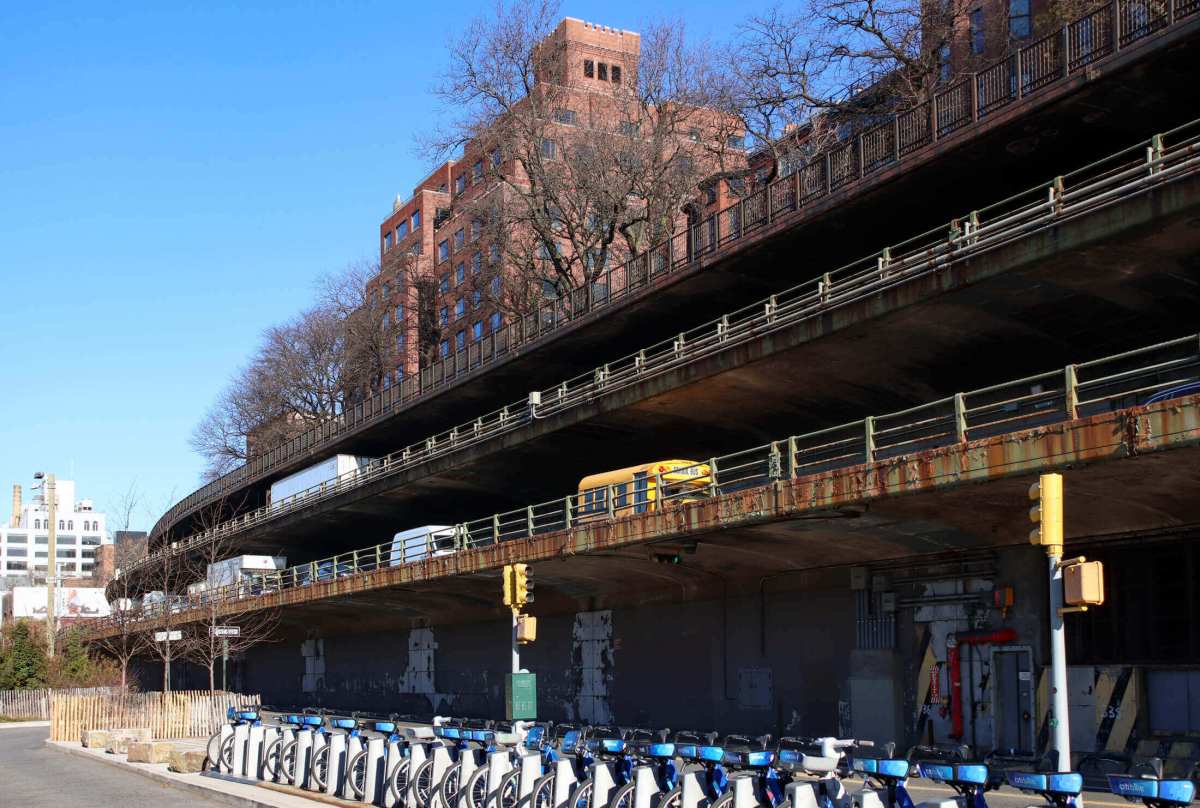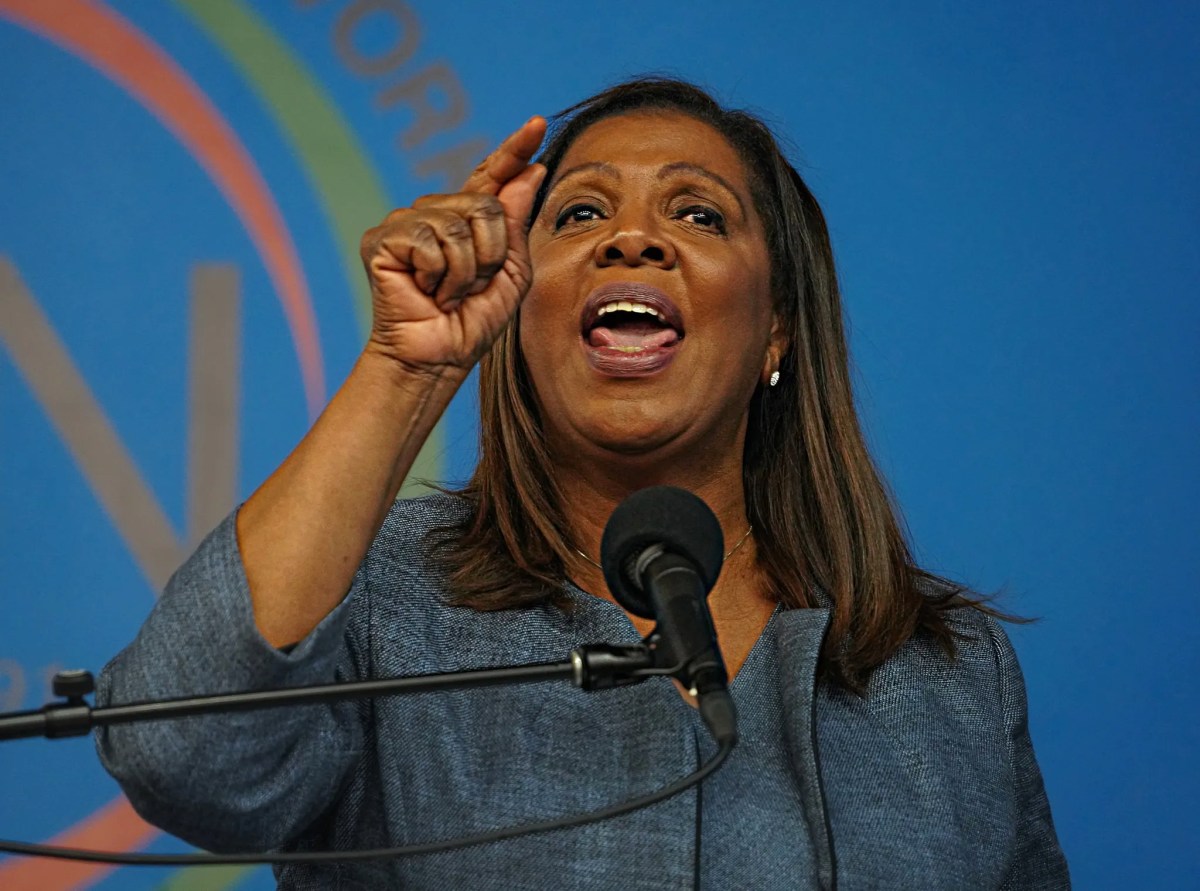The Adams administration on Tuesday rolled out an initial list of proposals for re-envisioning the Brooklyn-Queens Expressway — all of which would widen the crumbling cantilever section in Brooklyn Heights back to three lanes in each direction.
The Department of Transportation unveiled three proposals at a visioning workshop for the city-owned, triple-deck section of the BQE in Downtown Brooklyn, DUMBO, and Brooklyn Heights, between Atlantic Avenue and Sands Street, after years of dithering while the Robert Moses-era expressway rots away on the waterfront.
The three main proposals — nicknamed “The Stoop,” “The Terraces,” and “The Lookout” — would all involve either a partial or total rebuild of the triple cantilever’s retaining wall, while in some form covering the unsightly highway with greenspace connecting the Brooklyn Heights promenade to Brooklyn Bridge Park.
The administration wants to fast-track the selection process and have a choice by the spring of 2023, just in time for the project to start environmental review while the city can apply for grants made available through the federal infrastructure bill. One final series of outreach workshops will take place in February as the city refines its plans.
“Now is the time to think big. We have a once-in-a-generation opportunity to build a BQE for the 21st century and transform an environmental and aesthetic nightmare into a dream come true for our city,” Mayor Eric Adams said in a statement. “This is just step one. But these concepts push the boundaries and fully explore what is possible for BQE Central, and we are excited to hear from New Yorkers as we determine which one will become a reality.”
The plans don’t call for the restoration of three lanes of regular automobile traffic; each proposal would still have two lanes in each direction dedicated to that use, while the third lane would be used either as a shoulder, or as a bus or high-occupancy vehicle (HOV) lane. Streetsblog, which first reported the news, noted that federal funding comes with stipulations about width.
Any redesign would not see trucks banned from the roadway, with officials arguing doing so would simply reroute traffic onto side streets less able to handle them.
Situating the highway entirely underground in a tunnel is unfeasible, DOT says, due to costs, concerns about airflow, and the presence of competing MTA infrastructure. Replacing the beloved Brooklyn Heights promenade with a “temporary highway,” as was once proposed by the de Blasio administration, is out of the question after sustained backlash from Brooklyn Heights residents.



The Terraces and Stoop would involve a partial replacement of the crumbling 1940s retaining wall. The Terraces is most similar to what’s there today, while the Stoop would involve putting both directions of vehicle traffic on the same level. The Lookout, meanwhile, would see a full replacement of the retaining wall, with the two directions of roadway stacked directly on top of one another.
Within the purview of those three options, DOT is considering a bevy of methods of covering the highway with greenspace and connecting the promenade to Brooklyn Bridge Park, aiming to make the space less unsightly. The highway cannot be entirely covered due to regulations around ventilation and life support systems; all the proposals keep the highway open to the world on its side.
The highway was considered state-of-the-art when it was first built — but after decades of wear and tear, it’s devolved into a prime example of crumbling American engineering. Officials previously warned that inaction could lead to the triple cantilever becoming effectively unusable within this decade.
In its waning days, the de Blasio administration cut the vehicle lanes on the triple cantilever from three to two, promising this would extend its useful life by 20 years, but punted fundamental changes to his successor.
Should all go according to plan, procurement would be underway by 2024 with construction starting in 2027. Optimistically, the project would be completed by 2032.
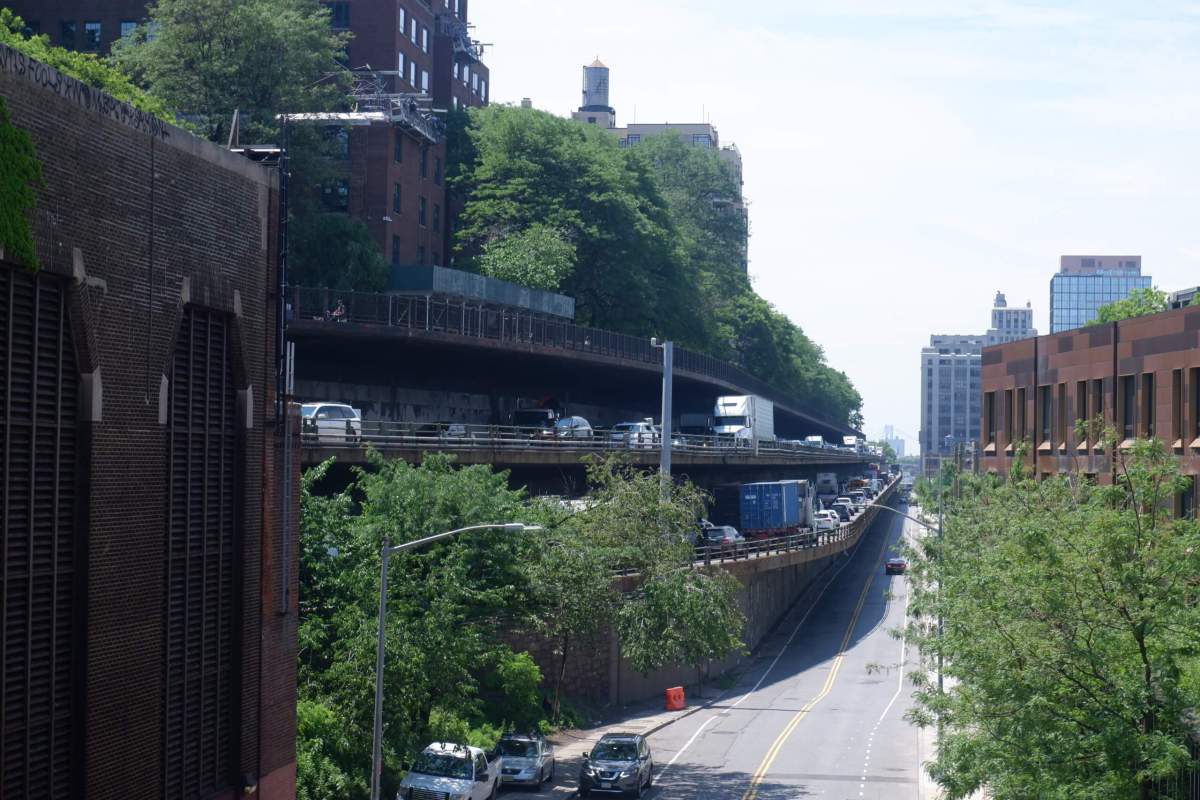
The triple cantilever has become much-maligned in recent years and many have called for the city to fully tear it down without replacing it, from advocates to powerful titans of industry. Many of those people expressed dismay at the city’s vision, arguing it wasn’t actually the reimagining of the space officials had promised.
“This is our chance to truly reimagine how people move through the city and to repeal the legacy of Robert Moses,” said Kathy Park Price, Brooklyn organizer at Transportation Alternatives. “Any plan to redesign the BQE must be done with the explicit goal of reducing car and truck traffic. Re-widening the highway will just lead to more traffic, worse air quality, and more noise pollution. Returning to the status quo should not be an option.”
Brooklyn Borough President Antonio Reynoso critiqued the plan as too narrowly focused on the cantilever section, which is owned by the city, and ignoring the state-owned sections to the north and south.
“What was initially presented as a comprehensive approach to re-envisioning the entire BQE corridor has quickly devolved into a process that is focused solely on the city-owned cantilever portion of the expanse,” said Reynoso. “This approach sidelines the environmental justice communities that have been negatively impacted by the BQE for decades.”
The Brooklyn Heights Association, a neighborhood civic group, took exception to the idea of the plan as “visionary.”
“We have been advocating for a visionary plan for the BQE corridor that will demonstrate that our city can lead on transforming our infrastructure to meet the future,” said Lara Birnback, of the Brooklyn Heights Association, on Twitter. “Folks, what we saw last night isn’t it.”
Read more: J Train Service to Jamaica Suspended for Track Work



